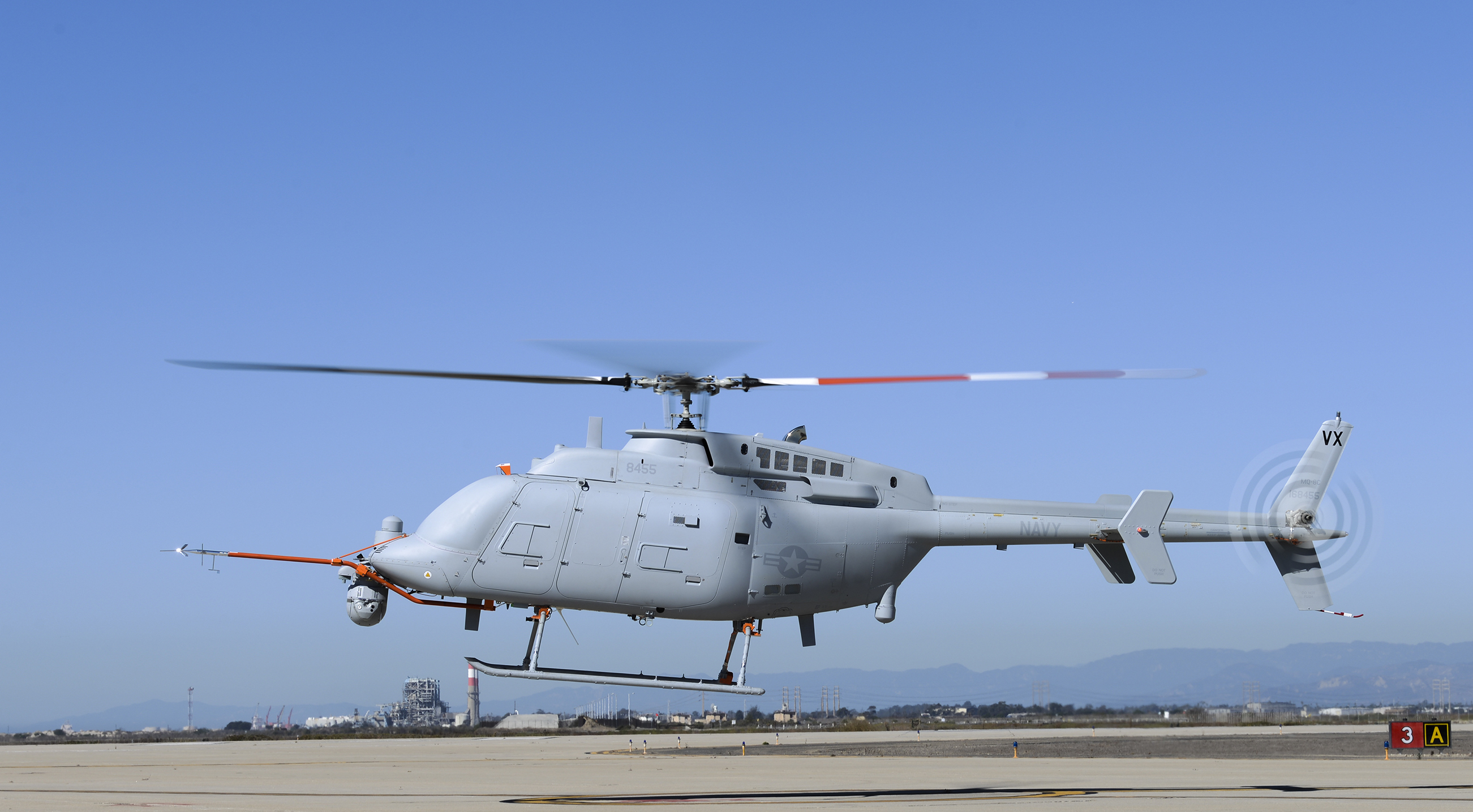
The Navy has abandoned its plans to buy 17 additional Northrop Grumman Fire Scout rotary wing unmanned aerial vehicles (UAVs) for the next five years as part of its Fiscal Year 2015 budget submission.
The submission zeroed out purchases of the helicopter UAVs over the Future Years Defense Plan (FYPD) — the five-year planning period that extends to fiscal year 2019. In its Fiscal Year 2014 FYDP the service indicated it would buy close to 17 MQ-8C Fire Scouts from 2014 to 2018 — primarily for the Littoral Combat Ship (LCS) mission packages.
So far the Navy has purchased 28 of the legacy MQ-8B Fire Scouts and paid for 14 of the larger MQ-8C variants — including two demonstration airframes currently being tested by the Navy in California.
The decision to zero out the program follows an anticipated reduction in the mission packages for the LCS after Secretary of Defense Chuck Hagel announced the cap of the current hulls at 32 from 52.
Northrop Grumman officials told USNI News, “we are working closely with the U.S. Navy to meet their current operational needs and path forward for the Fire Scout program.”
The Navy’s budget, ”deferred MQ-8 air vehicle procurements across the FYDP to better align with LCS deliveries,” said Capt. Patrick Smith, Fire Scout program manager for Naval Air Systems Command (NAVAIR).
The LCS cap will likely lead to a reduction in the original 64 mission packages planned for the program but It’s still unclear how the Navy will restructure the mission module packages in light of the caps.
Service leaders are meeting to discuss the future of the program in the coming weeks, service officials told USNI News.
The Navy had planned for 24 surface warfare (SuW) mission package for LCS that would field up to three MQ-8Bs or one MQ-8C.
 MQ-8B Fire Scouts are planned to be part of the SuW mission package for this year’s upcoming deployment of USS Fort Worth (LCS-3) to Singapore.
MQ-8B Fire Scouts are planned to be part of the SuW mission package for this year’s upcoming deployment of USS Fort Worth (LCS-3) to Singapore.
Instead of buying new airframes the service will instead invest in improvements in the existing fleet.
“Resourced in the FYDP procurement budget are ground control stations, ancillary equipment, training equipment, support equipment, technical support, and logistics which are critically needed to outfit the ships and train the aviation detachments for LCS,” Smith said in the statement from NAVAIR.
The reduction also seemingly stops the procurement of Fire Scouts for special operations forces.
“There was in prior years a specific notion of procuring MQ8s specifically dedicated to [special operations forces],” said Rear Adm. William Lescher, deputy assistant secretary of the Navy for budget during the Tuesday briefing at the Pentagon.
Instead SOF will request units from the Navy as needed, Lescher said.
The reduction in the number of aircrafts could also have other implications for the service.
When the Navy eliminated the of Lockheed Martin Remote Multi-Mission Vehicle (RMMV) from planned LCS anti-submarine warfare packages (a cut from 108 units to 54) in 2010, the move triggered a so-called Nunn-McCurdy breach — a US law that requires military equipment cost increases of 25 percent above the original estimate to undergo a review and certification process.

It’s unclear if the reduction to 52 Fire Scouts (28 MQ-8Bs and 14 MQ-8Cs) from a proposed combination of 120 MQ-8Bs and MQ-8Cs will increase trigger the same statute.





